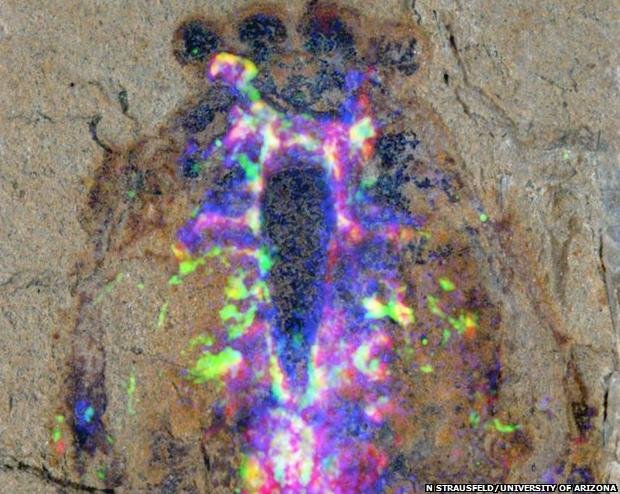(UPI) -- A clawed spider-like fossil believed to date back 520 million years shows clear evidence that a brain and nerve cords once ran through the creature's core.
The specimen confirms that spiders and scorpions had related ancestors, but the species branched out over a half billion years ago.















